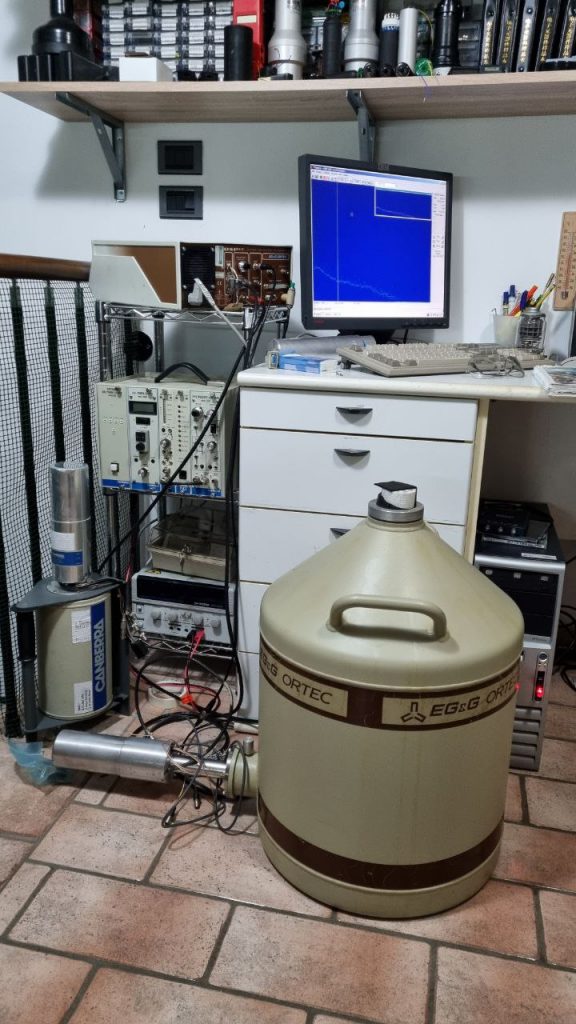Some time ago, at the Marzaglia scrap fair in September, I picked up an EG&G Ortec DSPec table-top multichannel analyzer.
My unit was missing the 5k, 10-turn “Helipot” HV selector.
I replaced it, thinking that was the only issue… I was wrong!
This post is about how I finally managed to get it working flawlessly.

This MCA is still relatively easy to find on eBay at a “reasonable” price. Definitely worth restoring. But how can you check if the hardware is fine?
On the rear panel, the connections to the computer are:
- Dual-port memory
- 10base2 coaxial Ethernet
- RS232
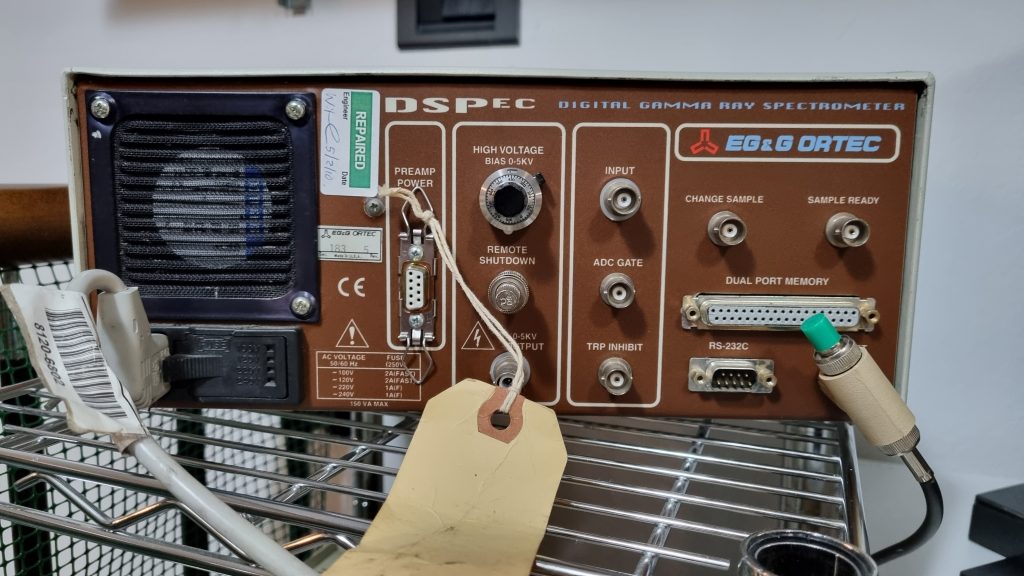
Using a standard RS232-to-USB adapter, connected to the MCA, I discovered that about 30 seconds after power-on the machine outputs a test result code at 9600bps 8N1.
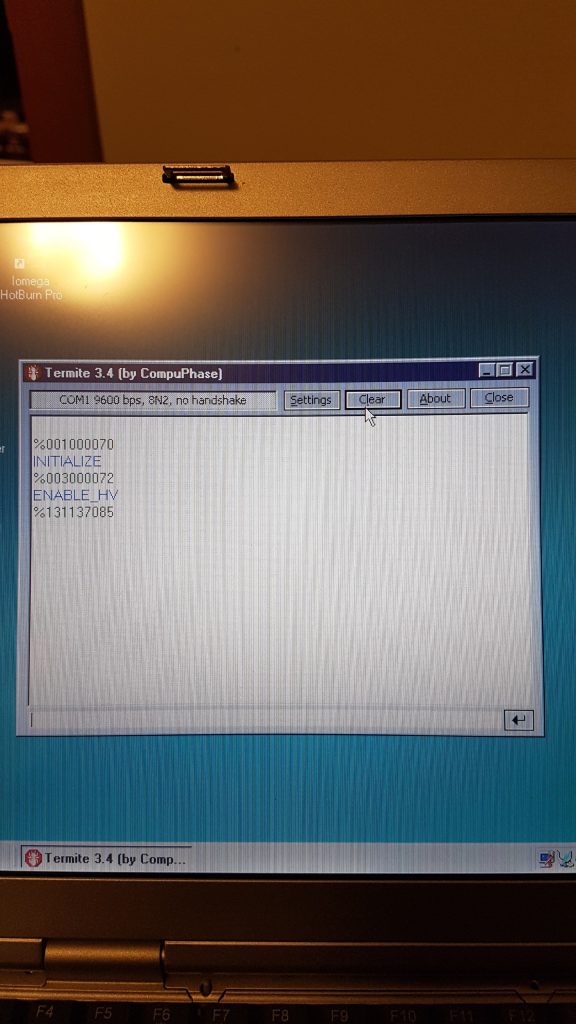
%001000070 → All self-tests passed!Sending various commands through RS232 confirmed that the MCA responds correctly and executes them. HV enable also works, exactly as described in the manual.
You can download the manual (including the full command set and reply codes) here: 761560G dspec.
Getting it to work with ORTEC MAESTRO
Now it was time to connect it to ORTEC MAESTRO (ver. 5.35).
The only way to do this is via the 10base2 coaxial Ethernet port.
You can use:
- a 3Com Etherlink III ISA Ethernet card
- a PCI version of the same card
- a 10base2-to-10baseT media converter
- or a switch with BNC 10base2 input
This was the tricky part that drove me crazy! Here’s what I found:
- Maestro requires IPX protocol, which means you must use Windows 95, 98, or XP
- A proper 10base2 network must be built with T-connectors, 50 Ω coax, and 50 Ω terminators at both ends
- The correct protocol must be installed in Windows, but NO TCP/IP should be configured
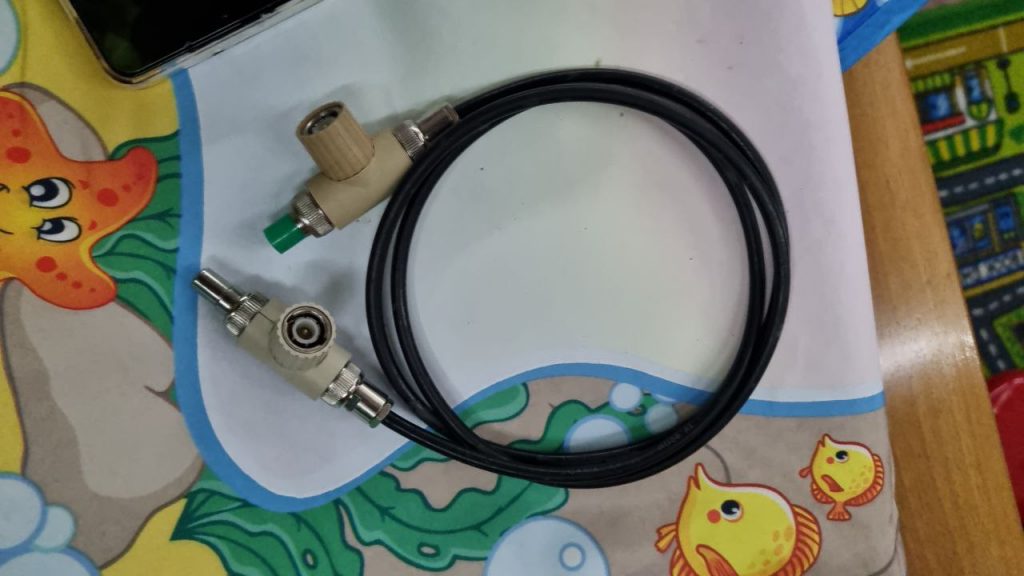
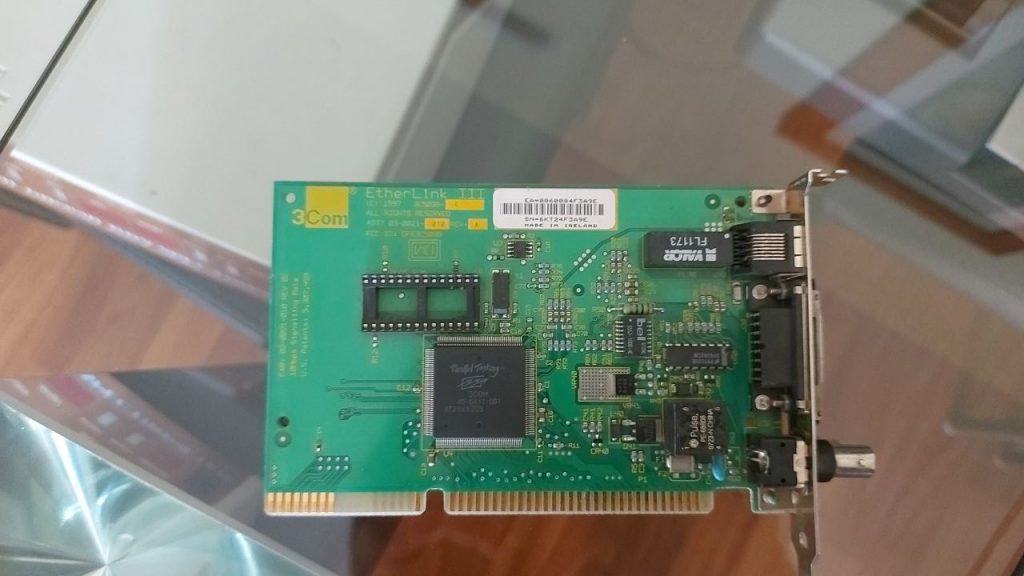
Configuring Windows 98
These are the exact steps I followed to configure networking under Windows 98.
Yes, I actually resurrected an old PC with an ISA slot just for this task!
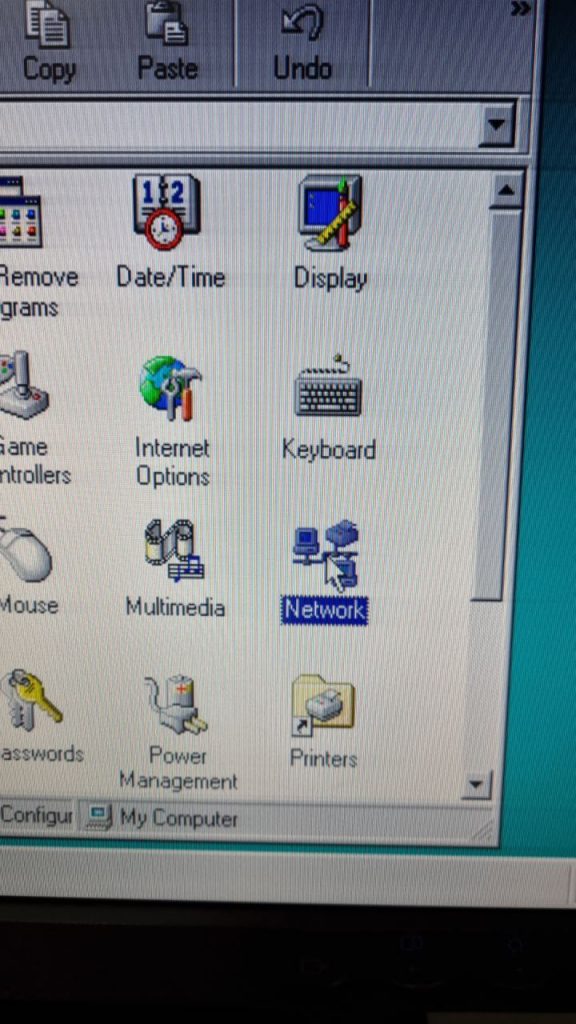
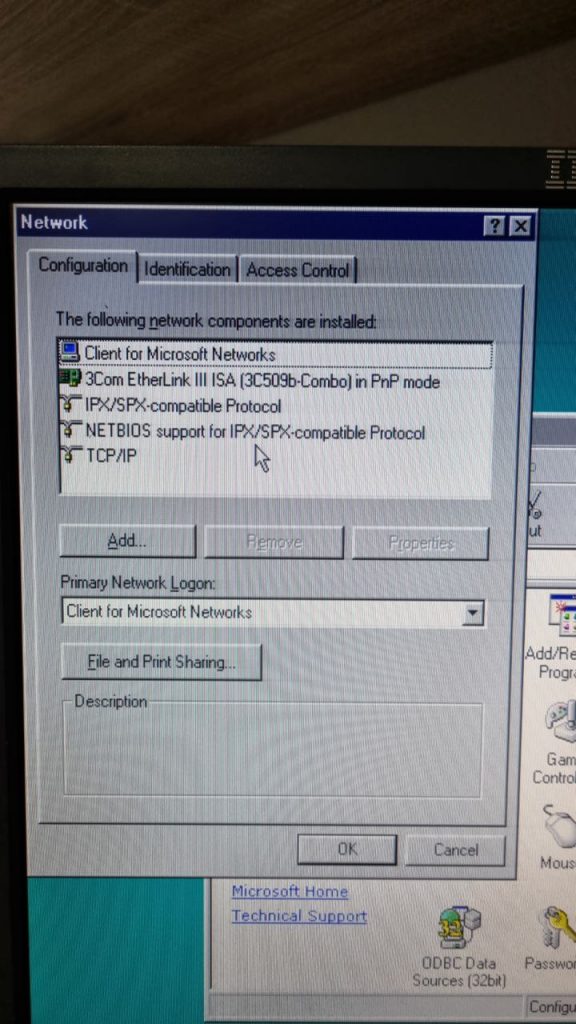
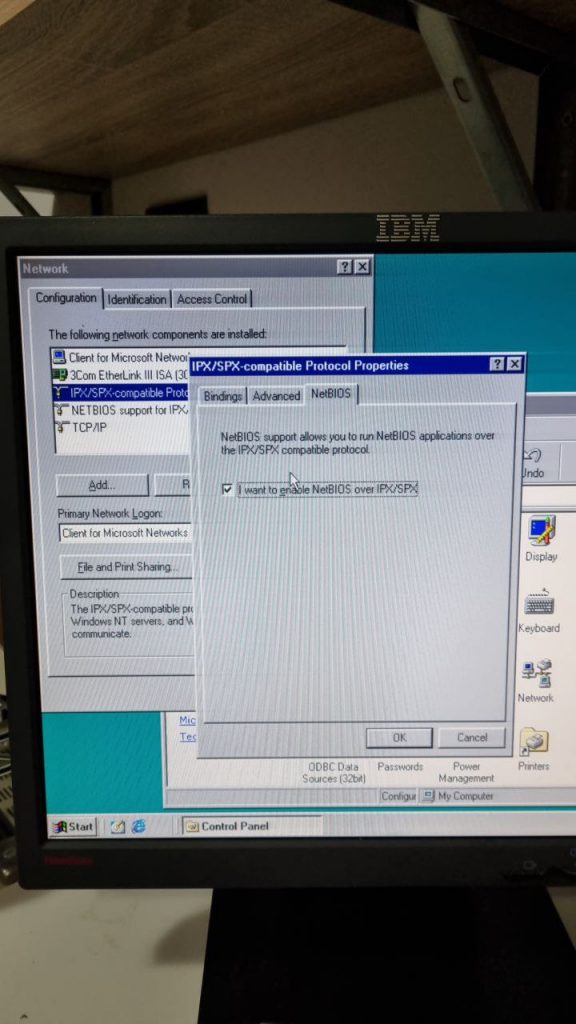
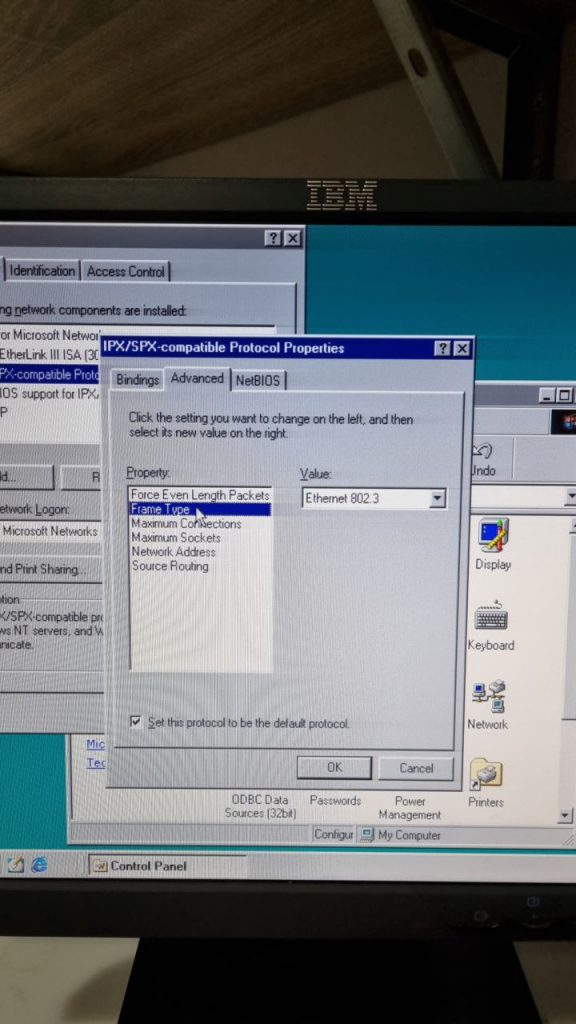
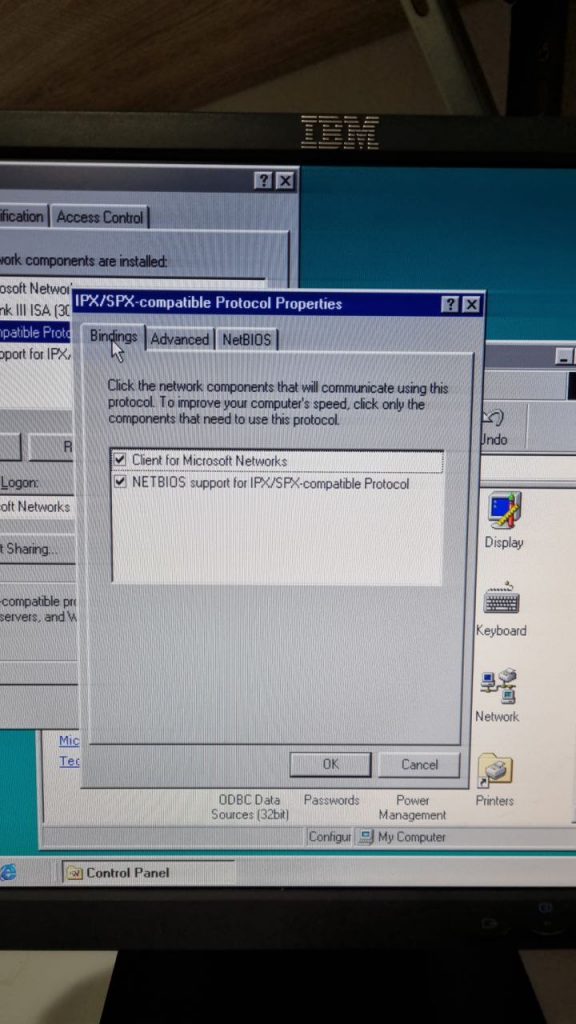
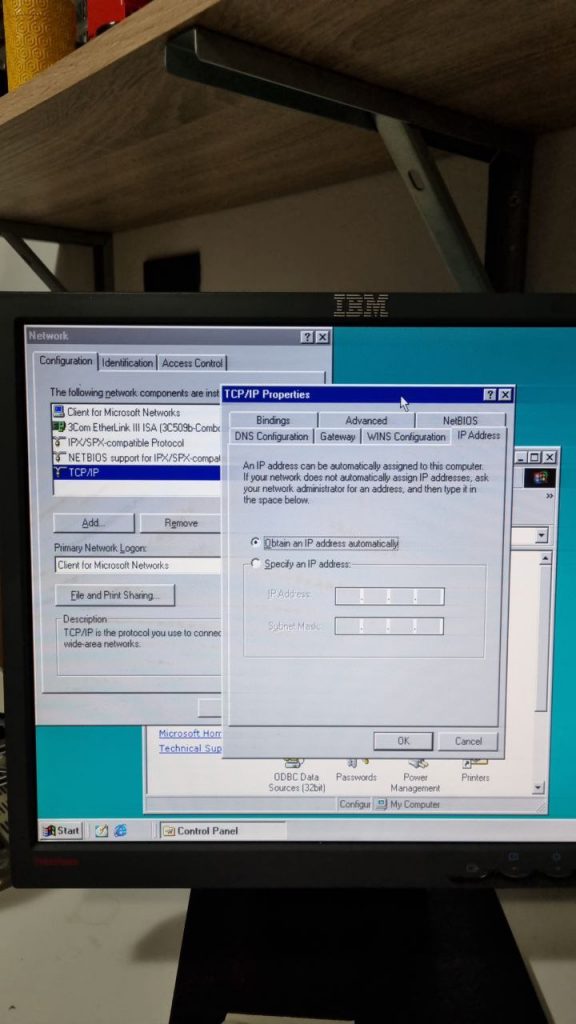
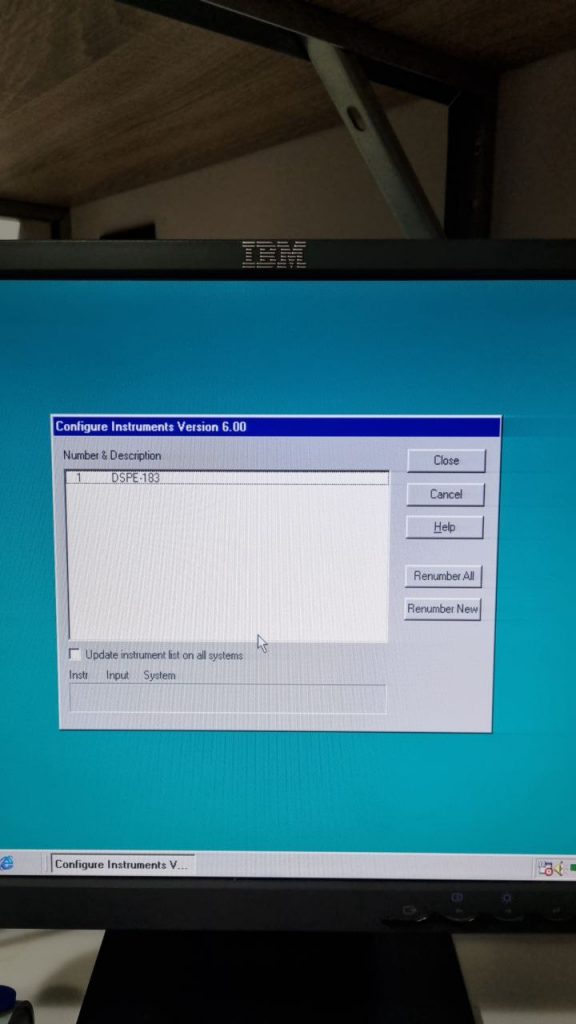
Now everything works perfectly with my HPGe detectors:
